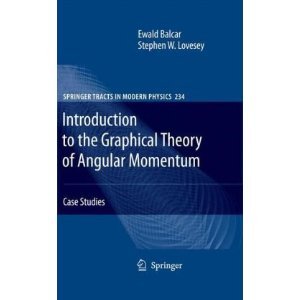Ebook Download | Introduction to the Graphical Theory of Angular Momentum | The present book presents a concise and solid introduction to the graphical methods in the theory of angular momentum. The authors introduce progressively the material, illustrated by a large amount of worked examples that point out the properties of the diagrams and indicate how to manipulate them in order to extract the main (physical) information of the solution. This has considerable advantages with respect to some more traditional treatments, that establish the main rules from the beginning and can be sometimes hard to assimilate. With a total of 276 diagrams, the detailed explanation of the diagrams is one of the main concerns of the authors in their exposition. Each of the diagrams is completed with an explanatory caption that summarises its main features. The step by step discussion introduces the reader consistently into the subject, from the elementary diagrams in the first chapters to the quite complex and sophisticated diagrams in the last chapters, especially those making reference to an actual problem in atomic physics. In this sense, this book is more a manual to master the graphical theory than a standard textbook on the subject. It should however be observed that there are slight formal differences between the graphical method as developed in this book and other authors like Varshalovich et al., but the reader will have no pain in detecting these details.
Summarising, the authors show in conclusive way that their approach to the graphical theory of angular momentum can be a powerful alternative tool to inspect physical systems, where the cumbersome algebraic method can be avoided or its application is extremely difficult. It should by no means be understood that the graphical method developed in this book does not require a serious study to become proficient in applying it. It is non-trivial and requires detailed inspection of the rules and types of operations. Its advantage with respect to the algebraic approach is that it represents a new perspective that can be further used to discover or derive new relations undetected until now.
http://downloadebookhere.blogspot.com



Tidak ada komentar:
Posting Komentar